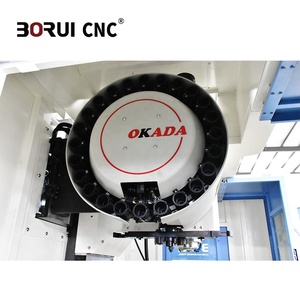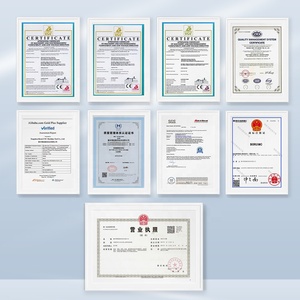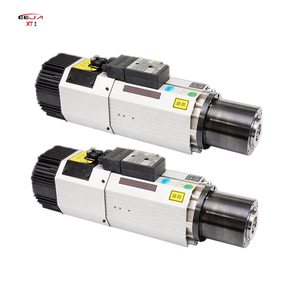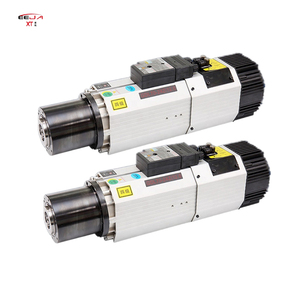
All categories
Featured selections
Trade Assurance
Buyer Central
Help Center
Get the app
Become a supplier

(7971 products available)


























Market Overview: The global CNC spindle market, which is crucial for mill spindle operations, has exhibited robust growth, rising from USD 2.41 billion in 2023 to USD 2.55 billion in 2024, with an anticipated CAGR of 6.21%, projecting a value of USD 3.68 billion by 2030, according to Research and Markets. This growth is fueled by the increasing demand for automated manufacturing processes that enhance precision and efficiency, particularly in industries such as aerospace, automotive, and electronics. The U.S. market demonstrates strong momentum, bolstered by regional initiatives aiming to upgrade manufacturing capabilities and reduce production downtime. Meanwhile, the Asia Pacific region, led by China, is a significant player due to its extensive manufacturing base and heavy investments in CNC machinery, further driving the mill spindle sector's expansion.
Industry Insights: The mill spindle market is characterized by a shift towards high-speed and automated solutions, catering to the evolving needs of manufacturers. The integration of IoT and AI technologies for predictive maintenance is becoming increasingly prevalent, enhancing operational efficiency and reducing downtime. However, challenges such as high upfront costs and the complexity of CNC machine operation continue to pose barriers for small and medium enterprises. In response, major players like Okuma Corporation and Setco Sales Co. are focusing on strategic partnerships and acquisitions to enhance service capabilities and technological offerings. As the market adapts to these dynamics, the focus remains on innovation and sustainability, aligning with global trends in manufacturing practices. According to Grand View Research, this strategic evolution positions the mill spindle market for continued growth amidst a competitive landscape.
Milling machine spindles are categorized based on various criteria, such as operating principles, architectures, and applications.
By Operating Principles
Electric spindles are built-in motors that produce rotary motions directly without needing additional transmission components. Their compact designs benefit high-speed and precision milling operations. On the other hand, motorized spindles have motors mounted separately that drive the spindle via belts or gears. They provide flexibility in selecting motor types and speeds but occupy more space.
By Architectures
Fixed-speed spindles maintain constant speeds regardless of cutting conditions. They are simpler and more affordable but limited to fixed-speed settings. Conversely, premium-speed spines offer variable speed within a certain range to suit different materials and cutting requirements. They allow greater versatility and optimization but come at higher costs.
By Applications
Standard-heavy-duty spindles handle typical milling tasks. High-precision spindles focus on guaranteeing precision and stability. Heavy-duty spindles are designed to bear large loads and momentums, suitable for heavy machining applications.
The following specifications and details explain the general maintenance requirements for the milling spindle assembly and its parts. Please note that these details are subject to change depending on the exact model and design of the mill unit in question.
The mill spindle finds applications in various industries due to its versatility in performing different milling tasks. Some usage scenarios include:
Machining Centers and CNC Milling Machines
In machining centers and CNC milling machines, the mill spindle acts as the primary cutting component. It aids in executing diverse machining operations on materials like metal, plastic, wood, and more. For instance, in a CNC horizontal spindle milling machine, the spindle may work with horizontal cutters to create slots, gears, and keyways.
Industrial Manufacturing
During product creation, the assembly line may use spindles with single- or multi-head milling cutters to modify workpieces, add apertures, and remove material. Depending on the specific product and spindle configuration, factories can use CNC milling spindles for efficient mass production.
Repair and Refurbishment
An inferior quality repair or a failed spindle could cause significant machine downtime, resulting in production losses and reducing equipment return investment. However, choosing a robust spindle with a suitable RPM for the milling machine can simplify repairs and refurbishments.
Woodworking
Woodworking enjoys the benefits of the accurate and efficient milling capabilities offered by CNC spindles for wood. These spindles enable various woodworking tasks, including drilling, engraving, and cutting.
When buying milling spindle holders, buyers should consider several factors to ensure they're buying the ideal spindle for their milling machine.
Q1: How to check the milling machine spindle condition?
A1: First, check whether the spindle itself is loose or not. Then, check the wear condition of the bearings. Next, see if there is any abnormal noise during the operation. Finally, check the spindle's temperature.
Q2: What are the main components of a mill spindle?
A2: The main parts of a milling machine spindle include the spindle tube, bearings, spindle sleeves, and tapered nuts. Spindle tubes have different shapes for different types of spindles. The bearings support the spindle and are usually installed on the downstream or upstream ends of the spindle tube. One or more sleeves can be found on the spindle, serving as a support for the cutter or a mounting element. The tapered nut is used to fix the cutter.
Q3: What are the key features of a mill spindle?
A3: The key features of a milling machine spindle are the speed and power of the spindle. The spindle's speed directly affects the machine's processing ability. Higher power can process harder materials or use bigger cutter heads.